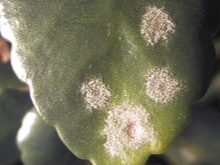Clusia: species, features of care and reproduction

Clusia is a perennial evergreen of the Clusiaceae family, named after the Dutch scientist Carl Clusius. The clusion is also called the "tree of autographs" because of the peculiarity of the leaf plates to preserve the inscriptions scrawled on them for a long time. The homeland of the plant is the territory of the tropics and subtropics in the north and south of America, where it can reach several meters in height.




Description
Clusia belongs to the numerous genus of trees and shrubs (there are about 300 species), some of which are cultivated at home. Many varieties have epiphytic properties. Aerial roots of young plants attach to trees, and as they grow, they reach the soil and take root there. New specimens can form from the branched roots. Clusia shoots are branched, over time they harden, overgrow with brownish bark and become like tree branches.
Dense lanceolate or oval leaf plates have short stems and are distributed alternately on the shoot. Their edges are solid, and the tops end in angularity. The surface of the leaves is smooth, bright green in color. The size of the plates varies depending on the grade. Clusia flowers are rather unusual, slightly thickened and seemingly waxed. In nature, the plant blooms all year round, the buds bloom at night and close in the morning.




The flowers are formed from 4-9 rounded white petals with shades of yellow or pinkish tones. The flowers reach 4-5 cm in diameter. When the clusion is pollinated, in their place fruits begin to ripen - round boxes with a light green shell, resembling a poppy seed. In the process of ripening, the peel acquires a rich brown hue, and the capsule opens up in the form of a star. In the middle there is an inedible red pulp and a large number of seeds.



Plant sap can cause irritation on contact with skin or mucous membranes. Because of this, it is worth wearing gloves when caring for the flower and restricting access to the flower for children and animals. Clusia cleans the air in a room well, and it is believed that it can absorb negative energy.
Types and popular varieties
Of the numerous family, only a few species are suitable for home keeping. Clusia pink is the most popular type among florists. Rosea is a fairly tall shrub with strong, branched stems and large, leathery foliage. Roundish or diamond-shaped leaf plates and dark green colors are attached with short petioles. The buds are formed singly on the apical stems and have white or pink petals with a bright yellow center. The flowers have a pleasant, light aroma.
Known varieties of this species include:
- dew "Princess" - with leafy plates of green color and large flowers of pink hue;
- "Variegata" - a variegated variety of clusia with a yellowish edging along the edges of the plates;
- "Yellow Variegate" - the leaves of the plant are speckled with yellow spots.



Lanceolate can reach three meters in height. The leaf plates are dense, lanceolate. The flowers are small, formed from 4-8 rounded white petals, the core of which is red or burgundy.
Clusia large (balsamic apple) forms shrubs of rather impressive sizes. Leathery, ovoid leaves are attached to the shoots with shortened petioles. Flowers of white or cream color form small inflorescences.
Large-flowered is distinguished by long, curly stems with extensive, obovate leaf plates with a clear vein along the center... The flowers correspond to the name of the species - they can grow up to 20 cm. The buds of a white or pinkish hue are collected in a funnel-shaped corolla.



Care features
It is better to buy a flower in spring and in specialized stores. Clusia is not particularly demanding in care, but nevertheless, for a good condition, she needs to create some conditions.
- Lighting plays an important role in the care of the plant, since it is quite light-loving and needs a long day of light up to 12 hours. Light is needed intense, but diffused all year round. Eastern or western window sills are optimal, and flowers placed on the southern windows need shading at noon. Additional lighting should be provided in the winter. With a lack of light, the stems stretch out and become thin, the leaves stop growing.
- Air temperature in the warm season, it should be kept within +25 degrees, and starting in autumn it needs to be gradually lowered, and in winter the flower feels quite comfortable at +20. Regular ventilation is essential for the shrub. Fresh air favorably affects the formation of the plant, but it is necessary to exclude drafts. In summer, the clusion can be safely taken out to the balcony or garden, but the place should be out of direct sunlight and closed from the wind.
- Watering the flower needs a restrained one, the substrate should have time to dry up to half. Water is used only at room temperature and separated for at least 24 hours; you cannot take hot or too cold water. The remaining liquid from the pan is poured. If the room is dry or very hot, the plant is sprayed with water, the leaf plates are wiped with a damp sponge. From time to time you can wash the flower under the shower, while the soil is covered with a film from excess moisture.
- Top dressing must be applied from April to October. For this purpose, complex mineral fertilizers are suitable, half of the indicated portion is applied every 2 weeks. In winter, in the presence of additional lighting, top dressing is used once a month.
- Pruning Clusia can withstand normally, so the formation of a bush will not give her any discomfort. To stimulate the branching of the stems, the upper parts of the shoots should be pinched. In spring, dry branches are cut off, and those that are too sticking out or spoiling the appearance are shortened.
Flowers up to three years old need to be transplanted every year, and adult plants should be enough once every 2-4 years.


The transplant is not easily tolerated by the plant, so everything is done very carefully:
- the clusion is transplanted in early spring;
- use the transshipment method;
- the new container should be a couple of centimeters wider than the previous one;
- the bottom must be covered with a drainage of 4 cm;
- the substrate is needed light, a composition of two parts of sod and leafy soil, one part of vermiculite and peat, 0.5 part of sand is optimal;
- the plant is planted, lightly pressing the ground around with your palms, and moistened;
- after transplanting, the flower should be slightly shaded for several days using daily spraying.
When growing a clusion at home, you can do without a substrate. This unusual plant can be safely kept in a transparent glass container. Such an original solution in interior decoration looks rather exotic and is gaining popularity. All care consists in the need to add water to the vase. But there are also some nuances that must be followed, otherwise the flower will die:
- water should not completely cover the roots;
- add liquid enough once a week;
- water should be taken only thawed or distilled, ordinary water is not suitable;
- water temperature over +15 degrees Celsius;
- the air in the room needs to be humid;
- avoid sunlight on the flask, it is better to keep it in a lighted room, but away from the window.
If you follow these simple rules, the plant will develop remarkably in such an unusual flowerpot. If there are signs of a decline in strength, it can simply be transplanted into the ground and grown in the traditional way.


You can see the breeding rules in the next video.
Reproduction methods
There are several ways to breed a plant:
- cuttings;
- layering;
- seeds.
Cutting is the most readily available method for home use. For it, cuttings 15-20 cm long are used from the tops of the shoots. They are soaked in a root former and placed in water or a sandy-peat mixture. For sprouts to develop, it is necessary to create greenhouse conditions. For this, containers are covered with polyethylene or glass and placed on a windowsill with diffused lighting.
The air temperature must be maintained within +25 degrees... Every day, for a few minutes, you need to open the greenhouse for air access and humidify as needed. After about a month, new leaves begin to appear - which means that the seedlings can be planted in a permanent place of growth.


Adult specimens possess aerial roots, which, in contact with the bark or soil, grow and form shoots. These outgrowths can be separated and cultivated as a separate plant. The process is the same as for a flower transplant.
After 4-6 weeks, shoots begin to appear, but until 4 leaves are formed, the film is not removed. Well-strengthened seedlings can be dived.


Seed propagation is a much more painstaking process. You need to start planting immediately after harvesting, since the germination of seed material quickly disappears. The seeds are soaked in preparations that stimulate growth for a day, then left on a damp cloth to be absorbed. The dishes are filled with a mixture of peat and sand, they are well moistened and the seeds are deepened by half in length. Cover with foil or glass and leave in a warm place where diffused light falls, not forgetting to ventilate.


Diseases and pests
With proper care, the clusia hardly gets sick, but it is still worth being aware of potential problems.
- The emergence fungal plaque on the soil indicates excessive moisture combined with low air temperature. This can lead to decay of the root system. The plant is treated with fungicides and transplanted into a new substrate. You can replace only the top layer of soil: it is removed, and the rest is well loosened and disinfected. After a while, you can add fresh soil.
- With rotting roots you need to urgently transplant the plant, otherwise it will die. All affected parts must be removed, the cuts are sprinkled with crushed charcoal, and the flower itself is sprayed with fungicides. For transplantation, a new substrate is taken, if the container is used the same, it will certainly be disinfected.
- If the stems are stretched, and the leaf plates become smaller - the lack of lighting affects. The plant needs to be rearranged closer to the light, and in the winter time, turn on additional light sources.
- If the leaves began to appear brown spots - the flower got sunburn. In such situations, it needs to be shaded.



Of the pests, the scale insect, spider mite and mealybug can damage the clusion. They feed on the sap of the plant. They can be recognized by the following features:
- the presence of white spiderweb threads - mite;
- small lumps that look like cotton - worm;
- rounded dark growths on the lower part of the leaf - shield.
When traces of insects are found, the plant it is necessary to wash well with soapy water, it is better to cover the soil with a film. After the flower is exposed insecticide treatment. Instead, you can try folk remedies: tinctures of wormwood, tobacco or garlic, as well as a decoction of onion peels. But for prevention purposes it is worth it is good to humidify the air and often ventilate the room, then no pests will appear on the clusion.
A little care and time spent will help in growing an exotic plant that will beautifully fit into any interior and brighten up the everyday home environment.


You can see how to care for a clusion in the next video.























The comment was sent successfully.